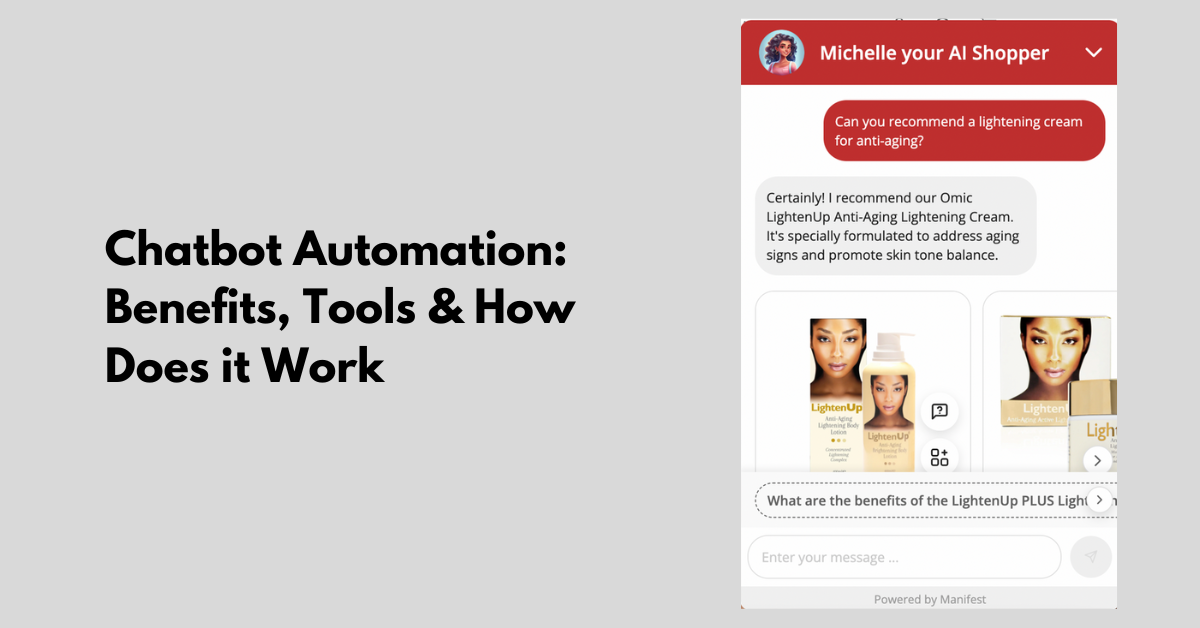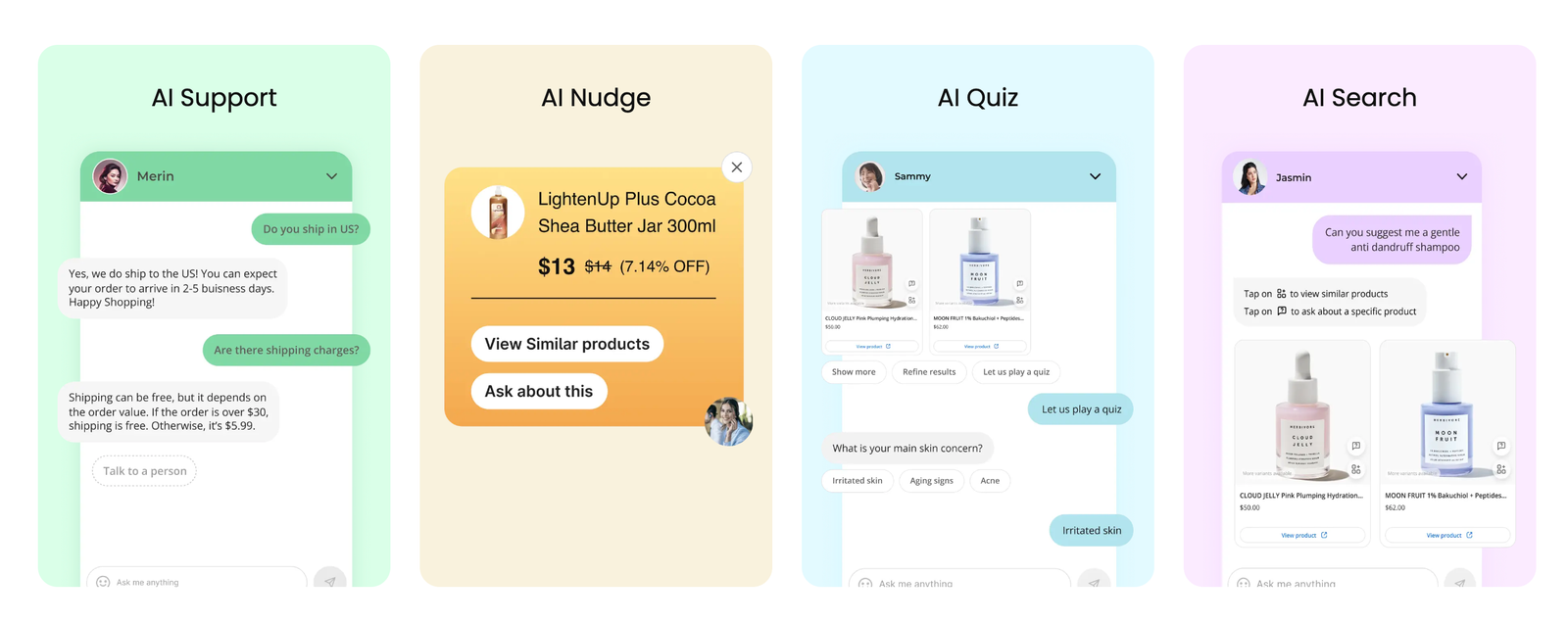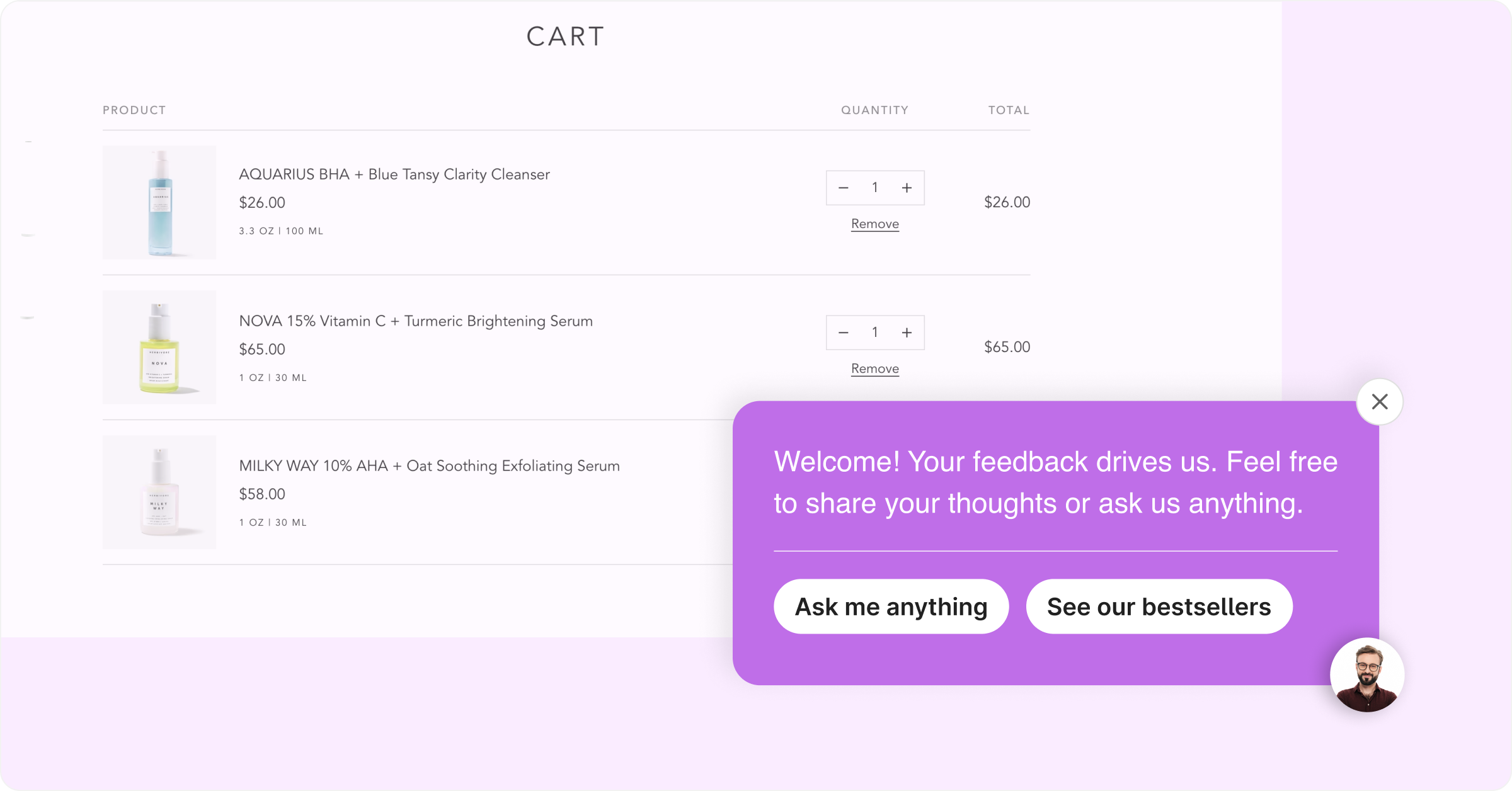Chatbot Automation: Benefits, Tools & How Does it Work

Chatbot automation is transforming how businesses interact with their customers, providing a more efficient and consistent way to handle inquiries. These automated systems are designed to simulate conversations with human users, often through messaging applications, websites, or mobile apps. By utilizing chatbots, businesses can offer round-the-clock support, quickly resolve common issues, and free up human employees to tackle more complex problems. This blog will delve into the benefits of chatbot automation, review the tools that make these systems possible, and explain how they operate to streamline customer service processes.
What is Chatbot Automation?
Chatbot automation involves using software applications to conduct online chat conversations via text or text-to-speech, instead of providing direct human interaction with a live person. These automated systems are programmed to understand and respond to customer inquiries, execute tasks, and manage information without human intervention. Chatbots can be integrated into websites, apps, and messaging platforms to facilitate instant communication with users. They are commonly used for customer service, information retrieval, and enabling more efficient transaction processes.
By handling routine inquiries and tasks, chatbots help businesses improve response times, chatbot automation and customer service efficiency while allowing human agents to focus on more complex issues that require a personalized touch.
Benefits of Automated Chatbots
Automated chatbots offer a variety of benefits for businesses looking to enhance customer interaction and operational efficiency. Here are some of the key advantages:
- 24/7 Availability: Chatbots provide constant availability, allowing customers to receive instant responses at any time of the day without the need for human presence. This is especially beneficial for global businesses dealing with customers across different time zones.
- Cost Efficiency: By automating routine queries, chatbots reduce the workload on human customer service agents. This can lead to significant savings on labor costs as fewer agents are needed to manage customer interactions.
- Increased Customer Satisfaction: With their ability to provide immediate responses, chatbots can significantly enhance customer satisfaction. They are particularly effective in resolving common questions quickly, which might otherwise lead to frustration due to waiting times.
- Scalability: Chatbots can handle a large volume of interactions simultaneously. This scalability makes them ideal for handling peak times or unexpected surges in customer inquiries without the need for additional staff.
- Consistent Responses: Chatbots follow programmed guidelines to ensure consistent responses that align with company policies. This consistency helps in maintaining the quality of customer service.
- Data Collection: Automated chatbots gather valuable data from interactions which can be analyzed to gain insights into customer needs, preferences, and behavior. This data is crucial for improving service offerings and tailoring marketing strategies.
- Integration and Automation: Chatbots can be integrated with various databases and APIs to provide more comprehensive responses and perform tasks such as scheduling, billing, and providing personalized recommendations.
- Language and Localization: Modern chatbots are equipped to handle multiple languages, making them an effective tool for businesses serving an international customer base. They can be localized to deliver culturally appropriate interactions.
How do Automated Chatbots work?
Automated chatbots are software applications designed to simulate conversation with human users, primarily through text-based methods. Here’s a step-by-step explanation of how these chatbots function:
- User Interaction:
The process begins when a user sends a message through a platform that supports chatbot integration, such as a website, social media channel, or messaging app.
- Input Processing:
The chatbot receives the user's input and processes it using natural language processing (NLP). NLP breaks down and interprets the text to understand the user's intent and the context of the conversation.
- Data Retrieval:
Based on the interpretation of the user’s request, the chatbot accesses a pre-defined database or connected backend system to find appropriate responses or actions. For queries that involve tasks like booking, ordering, or retrieving information, the chatbot pulls relevant data.
- Response Generation:
Once the necessary information is retrieved, the chatbot uses natural language generation (NLG) to craft a response that is coherent and contextually appropriate to the user's original query.
- User Feedback:
The response is sent back to the user. Chatbots often include feedback mechanisms where users can rate the helpfulness of a response or ask follow-up questions.
- Learning and Adaptation:
Many advanced chatbots are equipped with machine learning algorithms that allow them to learn from interactions and improve over time. They analyze completed conversations to detect patterns or areas for improvement, adjusting their responses accordingly.
- Maintenance and Updating:
Regular maintenance is performed to update the chatbot’s database, refine its algorithms, and ensure it adapts to new types of inquiries or changes in user behavior.
5 Best Chatbot Automation Tools
Here are detailed explanations of five excellent chatbot automation tools, beginning with Manifest AI:
Manifest AI

Manifest AI is a sophisticated tool designed specifically for Shopify stores, leveraging the advanced capabilities of GPT-4 to enhance e-commerce operations. It serves as an AI shopping assistant that helps manage customer interactions, automate responses, and personalize the shopping experience.
Features:
- AI-Driven Search: Uses natural language understanding to provide relevant search results based on customer queries.
- Interactive AI Quizzes: Engages customers by offering quizzes that help pinpoint their preferences and suggest products accordingly.
- Personalized AI Nudges: Delivers automated prompts based on user behavior and browsing history to encourage purchases and increase conversion rates.
- Lead Collection: Captures customer information during interactions, which can be used for marketing and retargeting efforts.
- Easy Customization: Allows store owners to tailor the AI’s responses and interactions to align with brand voice and business goals.
- Pros:
- Increased Engagement and Sales: By providing personalized interactions and product recommendations, helps boost customer engagement and drive sales.
- Cost Efficiency: Reduces the need for extensive customer service teams by handling routine inquiries and support tasks, cutting down on operational costs.
- 24/7 Customer Support: Operates around the clock, ensuring that customer inquiries are addressed any time of day, which enhances customer satisfaction.
- Cons:
Limited to Shopify stores: The only con for Manifest AI is it only works for Shopify stores.
Intercom

Intercom is widely recognized for creating personalized communication paths between businesses and customers.
Features: This platform supports live chat, targeted messaging for engagement, and customer support automation.
Pros: Offers robust analytics tools to track engagement and user satisfaction, facilitating targeted communication strategies.
Cons: Pricing can be relatively high, especially for small businesses or those just starting to explore chatbot options.
Drift

Drift specializes in conversational marketing and sales, which helps businesses connect with potential customers in real-time.
Features: Key features include real-time chat, chat-to-call transitions, and proactive message triggering based on user behavior.
Pros: Enhances lead generation and sales by engaging customers directly and promptly.
Cons: It may not be as effective in non-sales contexts and is primarily tailored to businesses looking to boost direct sales and marketing efforts.
Chatfuel

Chatfuel is a leading platform for building AI chatbots on Facebook Messenger and Instagram without extensive coding.
Features: It allows users to create AI chatbots that can automatically answer common questions, send broadcasts, and qualify leads.
Pros: Very user-friendly with a focus on automating engagements and scaling up interactions on social media channels.
Cons: Limited primarily to Facebook and Instagram; may not integrate as seamlessly with other platforms or back-end systems.
MobileMonkey

MobileMonkey provides a suite of tools for marketing and customer support across multiple messaging platforms.
Features: Features include omnichannel chatbot solutions, SMS marketing tools, and integrations with popular platforms like WhatsApp.
Pros: Great for businesses looking to manage multiple messaging channels through a single interface.
Cons: The breadth of options can be overwhelming, and the setup might be complex depending on the desired integration depth.
Chatbot Automation Examples
Chatbot automation is increasingly common across various industries, enhancing customer service and streamlining interactions. Here are five examples of how chatbots are being used effectively:
Customer Support

Many companies use chatbots to handle first-level support queries such as password resets, order tracking, and basic product questions. This allows human agents to focus on more complex issues.
Discount Coupon Distribution

E-commerce platforms use chatbots to automatically send discount coupons to customers who interact with specific promotional campaigns or after they've engaged with certain products, encouraging purchases.
Abandoned Cart Recovery

Chatbots track when customers leave items in their shopping carts without completing the purchase. They then send automated reminders with personalized messages and sometimes offer incentives like discounts to motivate customers to complete the purchase.
Retail Product Recommendations

E-commerce platforms use chatbots to offer personalized shopping advice. Chatbots analyze user responses and browsing habits to suggest products, helping to replicate a personalized shopping experience online.
Customer Feedback Collection

Chatbots are programmed to reach out to customers after a purchase or interaction to gather feedback through automated surveys, helping businesses gain insights into customer satisfaction and areas for improvement.
Conclusion
Chatbot automation offers a robust solution for enhancing customer interactions across various industries. By automating routine tasks, chatbots free up human agents to handle more complex issues, improving overall efficiency and customer satisfaction. The integration of chatbots is facilitated by a range of tools that are adaptable to different platforms, making them versatile for any business model. As technology evolves, understanding how chatbots work and leveraging their benefits is essential for businesses aiming to stay competitive and responsive in today’s fast-paced market.

.png)
